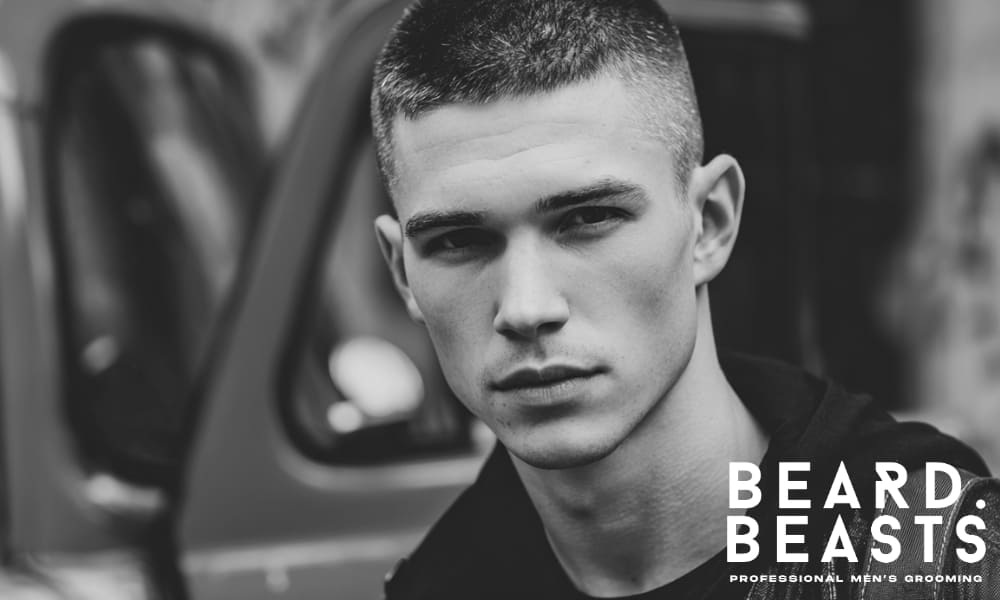Trying to decide between a mid fade vs high fade? You’re not alone.
Both cuts are clean, modern, and wildly popular right now — but they offer two completely different vibes. Whether you’re after something subtle and polished or bold and attention-grabbing, choosing the right fade can level up your entire look.
In this guide, I’ll break down the key differences between mid fades and high fades — how they look, how they grow out, which face shapes they flatter, and which style works best for your hair type and lifestyle.
Mid Fade vs High Fade: Key Differences That Matter
Let’s cut straight to it — here’s how a mid fade vs high fade stacks up where it count.
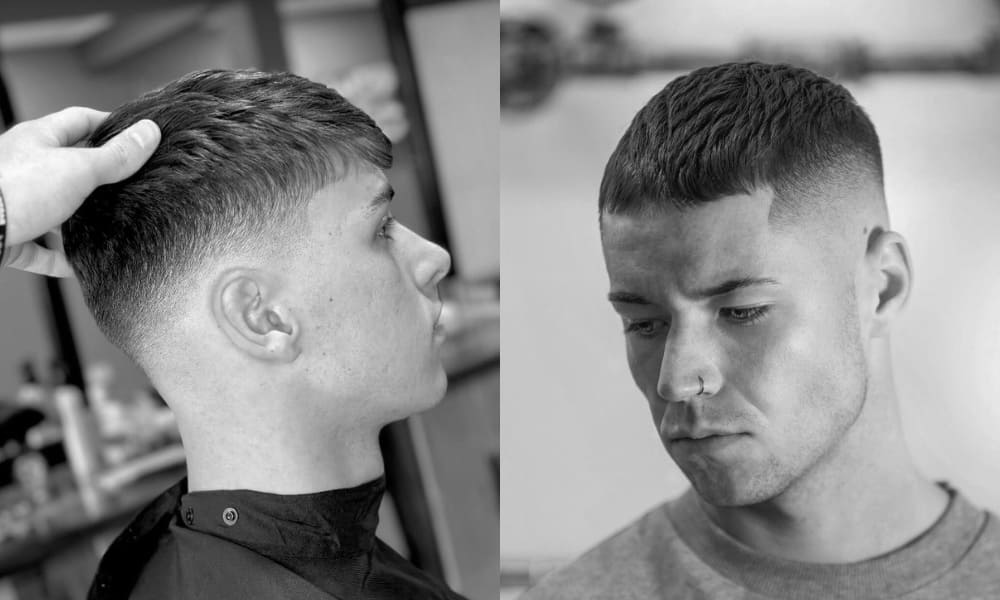
Fade Starts
- Mid Fade: Starts around the middle of the head.
- High Fade: Starts higher up near the temples.
Look & Feel
- Mid Fade: Balanced, subtle, and clean.
- High Fade: Bold, sharp, and high contrast.
Best For
- Mid Fade: Most face shapes and hair types.
- High Fade: Round or square faces, guys who like a strong style statement.
Styling Options
- Mid Fade: Great with quiffs, pompadours, textured tops, and side parts.
- High Fade: Perfect for buzz cuts, faux hawks, slick backs, and dramatic tops.
Maintenance
- Mid Fade: Lower upkeep — grows out smoothly.
- High Fade: Higher upkeep — needs regular touch-ups to stay sharp.
Work-Friendly?
- Mid Fade: Yes — versatile and professional.
- High Fade: Sometimes — depends on the cut and how styled it is.
Grow-Out
- Mid Fade: Fades more naturally over time and keeps shape longer.
- High Fade: Grows out quickly and loses edge without maintenance.
Style Impact
- Mid Fade: Enhances balance and overall shape.
- High Fade: Focuses all attention on the top — bold and eye-catching.
How to Choose the Right Fade for You
Still unsure where you land in themid fade vs high fade decision?
Let’s break it down by hair type, face shape, and lifestyle so you can pick the one that fits your style — and your day-to-day life.
By Hair Type
Your hair type plays a huge role in how a fade looks — and how easy it is to style.
Thick Hair
Mid fades work well to reduce bulk without losing shape. They’re ideal for styles that add volume up top while keeping the sides under control.
Thin or Fine Hair
High fades pull the focus upward and make the top look fuller. The sharp contrast helps create the illusion of more volume.
Curly or Coarse Hair
Mid fades blend better with curls and keep the texture looking clean. They also make it easier to shape and manage your curls naturally.
Straight Hair
High fades work great on straight hair by emphasizing sharp lines and bold contrast. Perfect for structured styles that need definition.
By Face Shape
The shape of your face can determine whether a mid or high fade flatters you best.
Round or Square Face
High fades create height and elongate the face. They sharpen the jawline and balance out wider proportions.
Oval or Heart-Shaped Face
Mid fades keep the overall look balanced and clean. This type of fade flows naturally with your features without adding too much height.
Long or Narrow Face
Mid fades are ideal here — they won’t stretch your features even more. They provide a polished look without exaggerating your face length.
By Lifestyle & Maintenance Level
How much time you’re willing to put into upkeep should factor into your fade decision.
Low Maintenance Type
Mid fades grow out more naturally and don’t require constant upkeep. They’re a smart pick if you’re not living at the barbershop.
Detail-Oriented or Style-Focused
High fades need more attention but always look sharp when maintained. Perfect if you like to keep your cut looking fresh every week.
Office/Professional Setting
Mid fades are more subtle and versatile. They work well in business or formal environments without being too bold.
Creative or Trendy Scene
High fades make a statement and show off your style. They’re a great match if you’re experimenting with modern or edgy looks.
Quick Takeaway: Mid Fade vs High Fade
- Choose a mid fade if you want balance, versatility, and easier maintenance.
- Choose a high fade if you want something bold, modern, and attention-grabbing.
There’s no wrong answer — just the one that fits your hair, face, lifestyle, and style goals.
Once you know which fade fits your face, hair, and lifestyle — it’s time to see what that actually looks like.
Let’s check out some of the most popular mid fade and high fade haircut styles trending right now.
Popular Mid Fade and High Fade Haircuts
Now that you’ve got a solid grip on the mid fade vs high fade differences, let’s look at the styles that guys are actually rocking right now.
Here are some of the best variations — clean, bold, and built to match your vibe.
Popular Mid Fade Haircuts
These mid fade styles are all about balance — subtle on the sides, clean on the blend, and versatile on top.
Mid Fade with Quiff

This one mixes classic volume with a modern fade. The quiff brings height and presence, while the mid fade keeps things clean and structured on the sides.
Mid Fade with Side Part
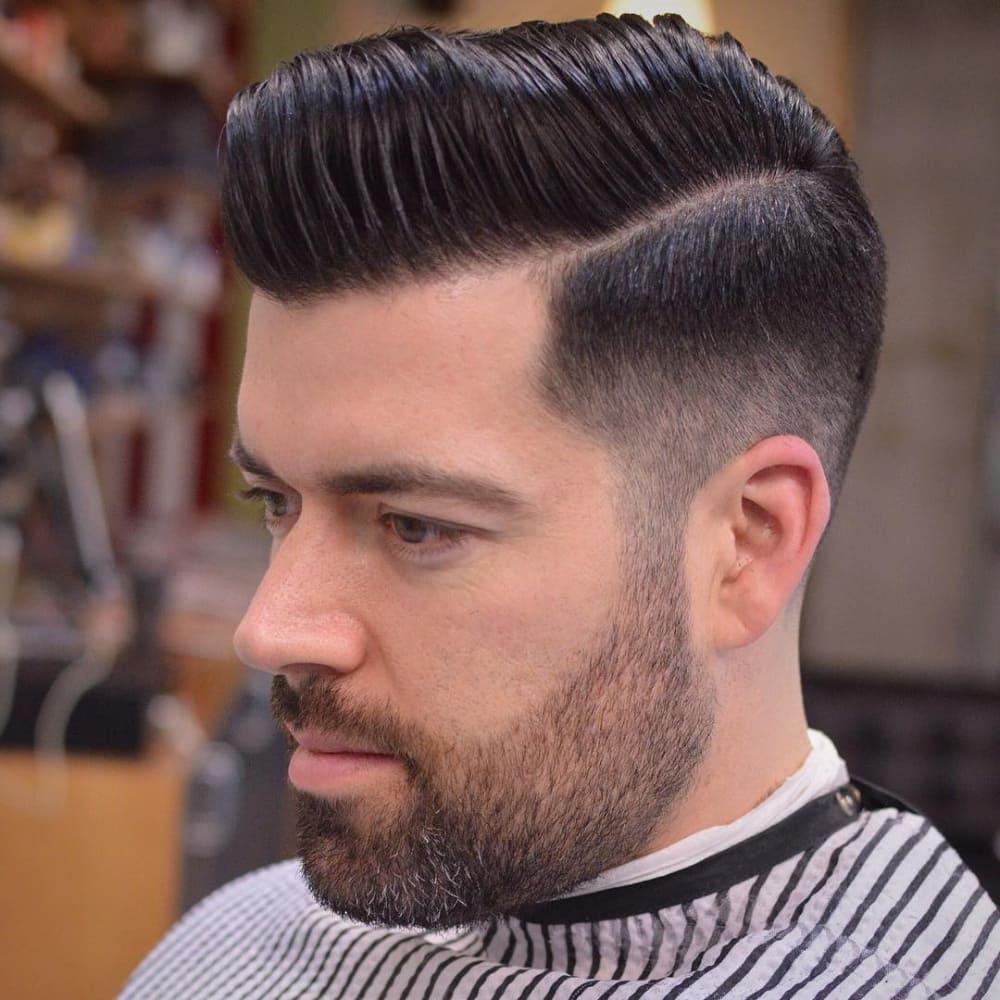
Polished and timeless. A defined side part paired with a mid fade gives you a sharp, business-ready look that transitions easily into casual settings.
Mid Fade with Textured Top

A great cut if you like a laid-back but styled appearance. The mid fade keeps it neat while the textured top adds movement and volume — perfect for a messy, lived-in look.
Curly Mid Fade
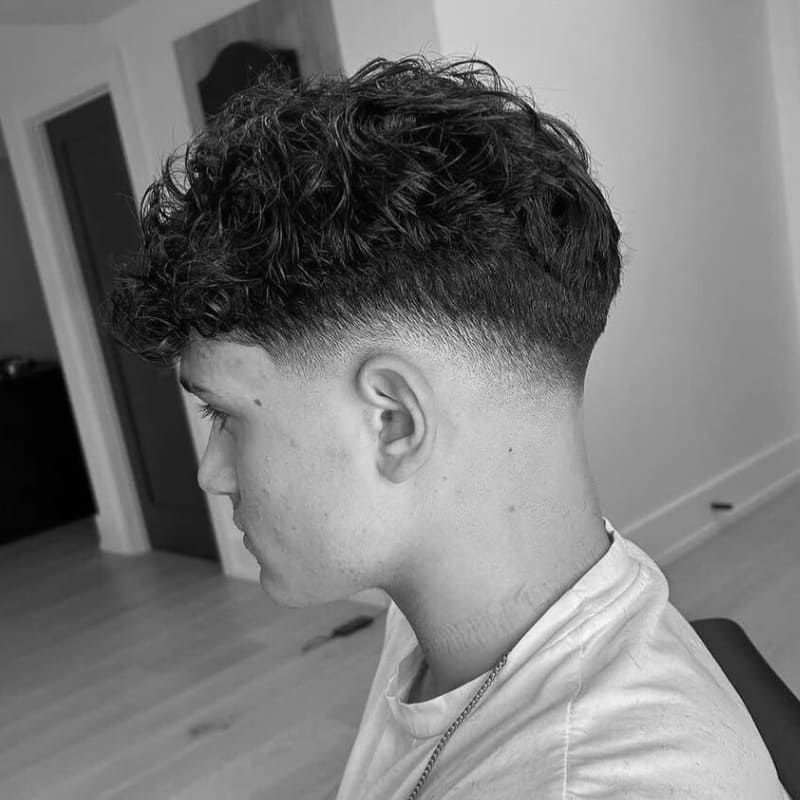
Let your curls do the talking. The mid fade blends into the sides naturally, giving you a clean frame around the texture on top without overdoing it.
Popular High Fade Haircuts
High fade styles are bold and dramatic — great for turning heads and standing out.
High Fade with Slick Back
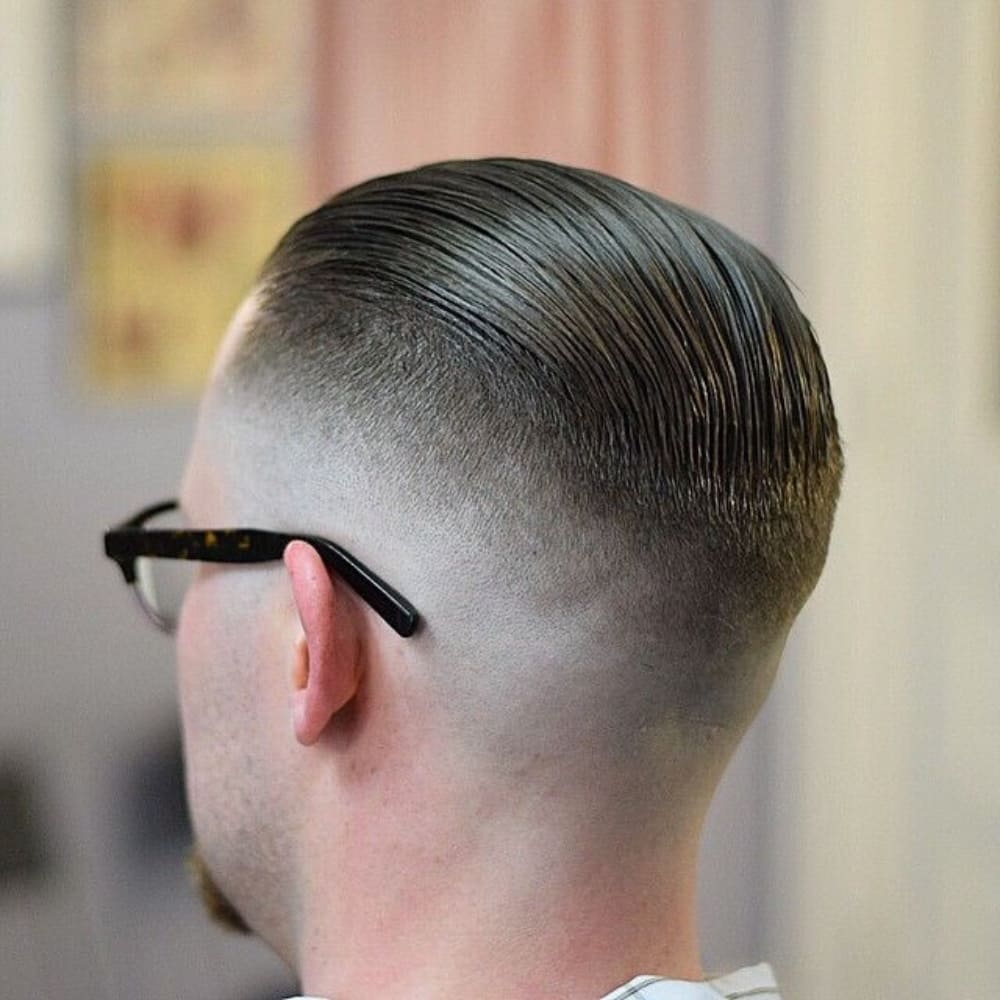
Clean and classic with a sharp edge. The slicked-back top adds that refined feel, while the high fade brings in contrast and structure. Perfect for formal or professional settings with a twist.
High Fade with Comb Over

Sharp, stylish, and easy to maintain. Thehigh fade comb over creates a clean part up top and blends into a bold fade that sharpens your entire profile. It’s a great mix of professional and edgy.
High Fade Undercut

This one’s loud in the best way. The undercut keeps the top disconnected from the sides, while the high fade pushes the contrast even further — ideal for guys who like a strong, standout look.
High Fade with Textured Crop

The crop on top keeps things tight and controlled, while the high fade brings a modern, edgy finish. Low-maintenance, high style.
Whether you lean toward a mid fade or high fade, the right variation comes down to how you wear it.
Each of these styles can be tailored to fit your look, lifestyle, and the message you want your hair to send.
Next up: want help getting it right in the chair? Let’s talk about how to ask your barber for the exact cut you want.
How to Ask Your Barber for the Perfect Fade
You’ve got the style in mind — now it’s all about communication.
Whether you’re asking for a mid fade or high fade, getting it right comes down to knowing the terms, bringing visual references, and being upfront with your preferences.

Use the Right Fade Terms
Barbers appreciate clarity. Instead of saying “just a fade,” be specific:
- “Mid fade” — tell them you want the fade to start around the middle of the head.
- “High fade” — ask for the fade to begin near the temples with a sharper contrast.
- Want it skin-tight? Say “skin fade” or “bald fade”.
If you’re unsure, ask your barber for their recommendation based on your face shape and hair type — most will give great input if you start the convo right.
Talk About the Top
Let them know how you want the top styled and how much length to keep. Be clear about:
- If you want texture or a more uniform look.
- If you prefer a part, comb over, quiff, or slick back.
- Whether you’re maintaining your current style or trying something new.
You can also ask how to style it at home — good barbers usually share tips if you ask.
Bring Photos — Always
Seriously. This is the cheat code.
Show 2–3 pictures of exactly what you’re aiming for. Make sure they show the front, sides, and back if possible. Visuals clear up any guesswork and help your barber deliver the exact look.
Know the Etiquette
Barbershop culture is real — and respecting it makes the whole experience better.
If you’re not sure how to tip, what to say, or how early to show up, check out this full barber etiquette guide — it covers everything you need to know without the awkward trial and error.
Clear communication gets you a cleaner fade.
When you show up with confidence, the right lingo, and a few solid reference photos, your barber knows exactly what to do — and you leave with the style you actually wanted.
Mid Fade vs High Fade – Frequently Asked Questions
Still undecided in the mid fade vs high fade debate? You’re not the only one.
Here are some of the most common questions guys have before they commit to a fade — and what you need to know to make the right choice.
Should I get a high fade or mid fade?
It depends on your face shape, hair type, and style goals.
- Choose a mid fade if you want something clean, balanced, and easy to maintain.
- Go with a high fade if you prefer a bold, edgy look with strong contrast.
Which fade is more professional?
- Mid fades are usually better for formal or office settings — they’re subtle and polished.
- High fades can still work professionally, but they tend to stand out more and may require sharper styling.
Do mid fades or high fades grow out better?
- Mid fades grow out more evenly and don’t lose shape as quickly, making them lower maintenance.
- High fades look crisp when fresh but can grow out unevenly if not trimmed regularly.
Can I switch from a mid fade to a high fade?
Yes — but be prepared for a dramatic change. A high fade removes more from the sides and starts higher on the head.
If you’re unsure, ask your barber for a “mid-high fade” as a transition.
Are mid fades or high fades better for round faces?
- High fades work best for round or square faces because they add height and lengthen your overall look.
- Mid fades still work, but may soften the face instead of sharpening it.
How often should I get my fade touched up?
- Mid fade: Every 2–3 weeks.
- High fade: Every 1–2 weeks to keep the sharp contrast.
When it comes to choosing between a mid fade vs high fade, there’s no one-size-fits-all answer — but there is a right one for you.
Use these answers as your guide, trust your gut, and don’t be afraid to show your barber a reference photo to lock in the perfect cut.
Final Thoughts on the Mid Fade vs High Fade Decision
Choosing between a mid fade vs high fade might seem small — but the right cut can seriously level up your entire look.
If you want something clean, balanced, and easy to grow out, the mid fade has your back. If you’re all about sharp contrast, bold edges, and statement styles, the high fade delivers exactly that.
Either way, it’s about finding the fade that fits your face, your hair, and your lifestyle.
Now that you know the difference — and how to style, maintain, and ask for it — you’re ready to make that next barber visit count.
Want more grooming and hairstyle guides? Explore our latest cuts and care tips here.




